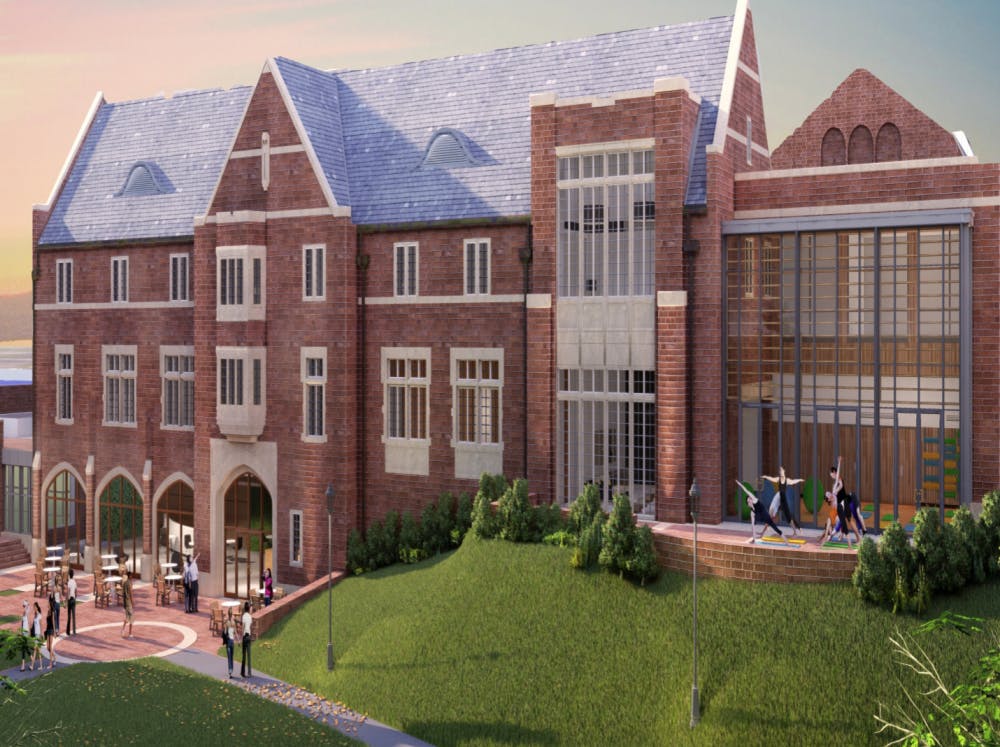In an open campus Health & Well-Being Center and Initiative Progress Presentation on Nov. 8., Tom Roberts, associate vice president of health and well-being, laid out the plans and updates that will be added to the new well-being center that is scheduled to open by the fall of 2020.
The first update was a name change for the university gym. The Weinstein Center for Recreation and Wellness will be called the Weinstein Center for Recreation.
Roberts and the committee announced that recreation and wellness would now be two separate departments. The university’s health promotion will move to the well-being center, and recreation programs will remain in the gym.
Roberts emphasized the importance of normalizing mental health in higher education. He and the committee were aiming to achieve happier, healthier students who could perform better academically, he said.
“[The well-being center] became a possibility a year ago in October because it started with the whole mental-health issue that became bigger than we realized,” Roberts said.
In an effort to address insufficient mental health resources, there will be three levels in the new building, which will be attached to the gym, Roberts said.
The first level will feature a healthy cafe, a demonstration kitchen where students can learn how to cook healthy meals and focus on nutrition, a quiet lounge and a mind-body studio with plenty of natural lighting, Roberts said. In the quiet lounge will be sleep pods, massage chairs, a meditation room and group rooms that will include a Himalayan salt spa and yoga, he said.
On the second floor will be the Student Health Center with exam rooms, a triage room, a peer educator suite, doctors' and nurses' offices and a health promotion resource center that will feature self-assessments for students, Roberts said.
The third floor will include Counseling and Psychological Services, a resource center, a group room and the Office of Sexual Misconduct Education and Prevention, Roberts said. UR plans to also build a meditation garden outside of the building to create a peaceful area for students, he said.
Along with updates to the well-being center plans, there are a few changes planned for the gym as well, Roberts said.
On the multi-purpose room of the well-being center, which will be on the second floor, there will be a glass wall to see inside of the track in the gym, Roberts said. He also spoke about how university leaders plan to switch the free weight area on the second floor of the gym with the cardio equipment from the first floor to create a “better flow” and make it easier to navigate through the gym.
“We take this very seriously,” Roberts said. “We took the staff and stood on the jogging track and asked what is this going to feel like [as students].”
Enjoy what you're reading?
Signup for our newsletter
Overall feedback from students has been positive, Roberts said. He and Steve Bisese, vice president for student development, have presented these plans to the Panhellenic Council, Interfraternity Council, Westhampton College Government Association, Richmond College Student Government Association and student cabinet, and at two open sessions that students and faculty members were welcome to attend.
Senior Lily Howlett, who attended the presentation for Panhellenic Council, said she believed this center would improve campus in many ways.
"The new well-being center will be an incredible addition to our campus," Howlett wrote in an email. "It will foster important discussions on mental health, and students will undoubtedly use this new center and will greatly benefit from it."
Bisese stated in an email that he and Roberts had also spoken with the presidents' council, a group he advises with the presidents of all student government associations, and that he and Roberts are continuing to schedule upcoming presentations.
Roberts and Bisese have also had multiple meetings with the music and art departments to figure out ways to incorporate art and music in the new building as well.
The meeting with the music department focused on ways to integrate music therapy in a lounge, Roberts said. The example he suggested was putting a piano in the building to allow a student who might need to release some energy to play it.
Roberts also explained that those planning the well-being center have adopted ideas of a self-assessment option because they want to educate faculty members and students about their mental health. Roberts said many problems could be the result of something as simple as needing better nutrition or more sleep. He said he and Bisese wanted to really drive students to use this facility on a regular basis and that they planned to break ground in the spring of 2019.
“There’s a tendency for people to say you need to go to a counseling center for an issue, but there are so many steps before you should do this,” Roberts said.
Contact news writer Sophie Pilkington at sophie.pilkington@richmond.edu.
Support independent student media
You can make a tax-deductible donation by clicking the button below, which takes you to our secure PayPal account. The page is set up to receive contributions in whatever amount you designate. We look forward to using the money we raise to further our mission of providing honest and accurate information to students, faculty, staff, alumni and others in the general public.
Donate Now



